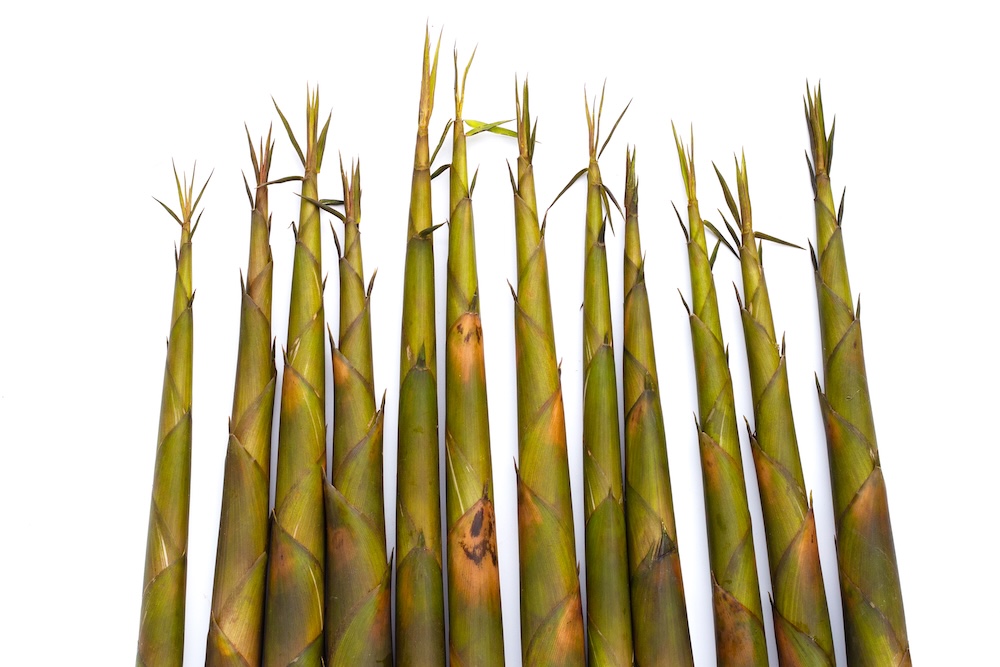Bamboo shoots — the tender, edible sprouts of the bamboo plant — are far more than an exotic ingredient in stir-fries. They represent resilience, versatility, and the promise of sustainable living. Across Asia and beyond, bamboo shoots have been used for food, medicine, construction, and culture for centuries. Today, they are gaining new attention as people search for climate-friendly diets and renewable materials.
In this guide, we’ll explore 25 key facts and uses of bamboo shoots, highlighting both their benefits and the sustainability questions that surround them.
Nutritional and Culinary Benefits
1. Low in Calories, High in Fiber
Bamboo shoots are naturally low in fat and calories but high in fiber, making them ideal for balanced diets.
2. Rich in Plant Compounds
They contain phytochemicals, antioxidants, and anti-inflammatory properties that support overall wellness.
3. Protein for Plant-Based Diets
While not as protein-rich as legumes, bamboo shoots provide a valuable plant-based protein source.
4. Essential Vitamins and Minerals
They are a good source of potassium, copper, manganese, and vitamin B6, supporting heart and brain health.
5. Popular in Asian Cuisine
Fresh bamboo shoots are staples in Chinese, Japanese, Thai, and Indian cooking — from soups to curries to pickled condiments.
Traditional and Cultural Importance
6. Ancient Asian Superfood
Historical records show bamboo shoots were consumed as early as the Zhou Dynasty in China (over 3,000 years ago).
7. Seasonal Food Rituals
In Japan, harvesting fresh shoots in spring is tied to cultural traditions and seasonal festivals.
8. Symbol of Renewal
Bamboo is seen as a symbol of resilience and rebirth. Its shoots echo this symbolism in cuisine and healing practices.
9. Folk Medicine Applications
Traditional medicine uses bamboo shoots for detoxification, digestion support, and anti-inflammatory remedies.
10. Bamboo Shoots in Ayurveda
In India, shoots are used in Ayurvedic treatments for respiratory conditions and wound healing.
Sustainability Insights
11. Bamboo as a Climate-Friendly Crop
Bamboo grows quickly, regenerates naturally, and captures large amounts of carbon dioxide — making its shoots a renewable food source.
12. Soil Health Benefits
Bamboo roots stabilize soil, prevent erosion, and improve water retention — a benefit over monoculture crops.
13. Minimal Inputs Needed
Unlike water-hungry cotton or pesticide-heavy crops, bamboo requires little irrigation or chemicals.
14. Circular Food Source
Bamboo provides both edible shoots and durable stalks — supporting a multi-use, circular economy approach.
15. Food Security Potential
Bamboo shoots can be grown in diverse climates, offering food resilience for rural and developing communities.
Environmental Considerations
16. Processing Impacts
Some canned bamboo shoots undergo chemical processing that may involve high water or energy use. Fresh, local shoots are a better choice.
17. Transport and Supply Chain
Imported shoots carry a carbon footprint. Choosing locally grown bamboo shoots where possible reduces environmental impact.
18. Invasive Species Concerns
Not all bamboo species are eco-friendly in all regions. Some can spread aggressively, displacing native plants if not managed responsibly.
19. Waste and Packaging
Buying shoots in bulk or fresh reduces reliance on single-use cans or plastics. Composting peel and trimmings closes the loop.
20. Biodiversity Trade-offs
Large-scale bamboo plantations may threaten ecosystems if not carefully planned — always ask: who benefits, and what is displaced?
Everyday Uses and Practical Tips
21. How to Prepare Fresh Shoots
Peel the tough outer layers, boil to remove bitterness, then slice for soups, curries, or stir-fries.
22. Pickling for Preservation
Shoots can be pickled or fermented, extending shelf life without energy-intensive refrigeration.
23. Bamboo Shoots in Vegan Cooking
They add crunch and umami flavor to plant-based dishes, serving as a meat substitute in texture.
24. Circular Swap: Grow at Home
For those in suitable climates, planting bamboo can provide both fresh shoots and renewable building material.
25. Future Innovation
Researchers are exploring bamboo shoot extracts for natural food preservatives and eco-friendly packaging solutions.
Final Thoughts
Bamboo shoots show how a single plant can nourish bodies, cultures, and the Earth — but only if cultivated and consumed responsibly. They remind us that food systems work best when circular: when crops feed people, strengthen soil, reduce waste, and regenerate themselves.
Choosing bamboo shoots as part of your diet or sustainable lifestyle is more than a culinary choice — it’s a step toward supporting agricultural diversity, low-impact farming, and climate resilience. Small shifts, like opting for seasonal bamboo shoots or composting peel waste, create ripples that grow into waves of change.









Reader Interactions